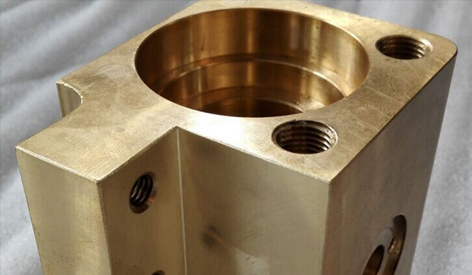ㆍPrivacy: We respect your privacy. Here you can find an example of a non-disclosure agreement. By submitting this form, you agree to our terms & conditions and privacy policy.
Views: 3 Author: Site Editor Publish Time: 2024-04-26 Origin: Site









1. Copper as a Machinable Material
Copper is a widely used material in machining due to its excellent conductivity, malleability, and corrosion resistance. Its machinability depends on the alloy composition and processing techniques. Understanding copper's properties is crucial for successful milling operations.
2. Cold Working Techniques for Copper
Cold working refers to the deformation of copper at room temperature, enhancing its strength and hardness. Techniques like cold rolling, cold drawing, and cold forging are used to shape copper components without heating. Cold working can improve mechanical properties while maintaining dimensional accuracy.
3. Forging Processes for Copper
Forging involves shaping copper by applying compressive forces, typically at elevated temperatures. Hot forging and warm forging are common techniques used to produce intricate copper parts with precise dimensions. Forging refines the grain structure, enhancing strength and reducing porosity.
4. Milling Considerations for Copper Alloys
When milling copper alloys like brass or bronze, tool selection and cutting parameters play a crucial role. High-speed steel (HSS) or carbide tools are preferred for their wear resistance. Proper coolant application and chip evacuation help maintain tool life and surface finish during milling operations.
5. Surface Finish in Copper Milling
Achieving a smooth surface finish is essential in copper milling applications. Finishing passes with appropriate cutting speeds and feeds, along with the use of sharp tools, contribute to a fine surface finish. Post-machining processes like polishing or electroplating can further enhance the appearance and corrosion resistance of copper parts.
6. Tooling and Fixture Design for Copper Milling
Effective tooling and fixture design are critical for stable and accurate milling of copper components. Tool geometry, tool coatings, and toolpath strategies influence machining efficiency and part quality. Robust fixtures ensure workpiece stability, minimizing vibrations and tool deflection during milling.
7. Heat Management in Copper Milling
Controlling heat generation is crucial in copper milling to prevent workpiece deformation and tool wear. Proper coolant selection and application help dissipate heat, maintaining machining accuracy and prolonging tool life. Heat-sensitive features like thin walls or intricate details require careful thermal management.
8. Dimensional Accuracy in Copper Milling
Maintaining tight tolerances is essential for precision copper milling. CNC machining techniques, including high-speed machining (HSM) and multi-axis milling, ensure dimensional accuracy and repeatability. Metrology tools such as micrometers and CMMs verify part dimensions and geometrical integrity.
9. Quality Assurance in Copper Milling
Implementing quality assurance measures is vital to ensure the quality of milled copper components. Inspection techniques such as dimensional checks, surface roughness analysis, and material testing verify part conformity to specifications. Quality management systems and process controls enhance overall product quality.
10. Applications and Advantages of Copper Milling
Copper milling finds applications in various industries, including electronics, aerospace, and automotive. Its excellent electrical conductivity makes it ideal for electrical components and heat exchangers. The combination of cold working and forging techniques expands the range of copper parts that can be efficiently manufactured.

